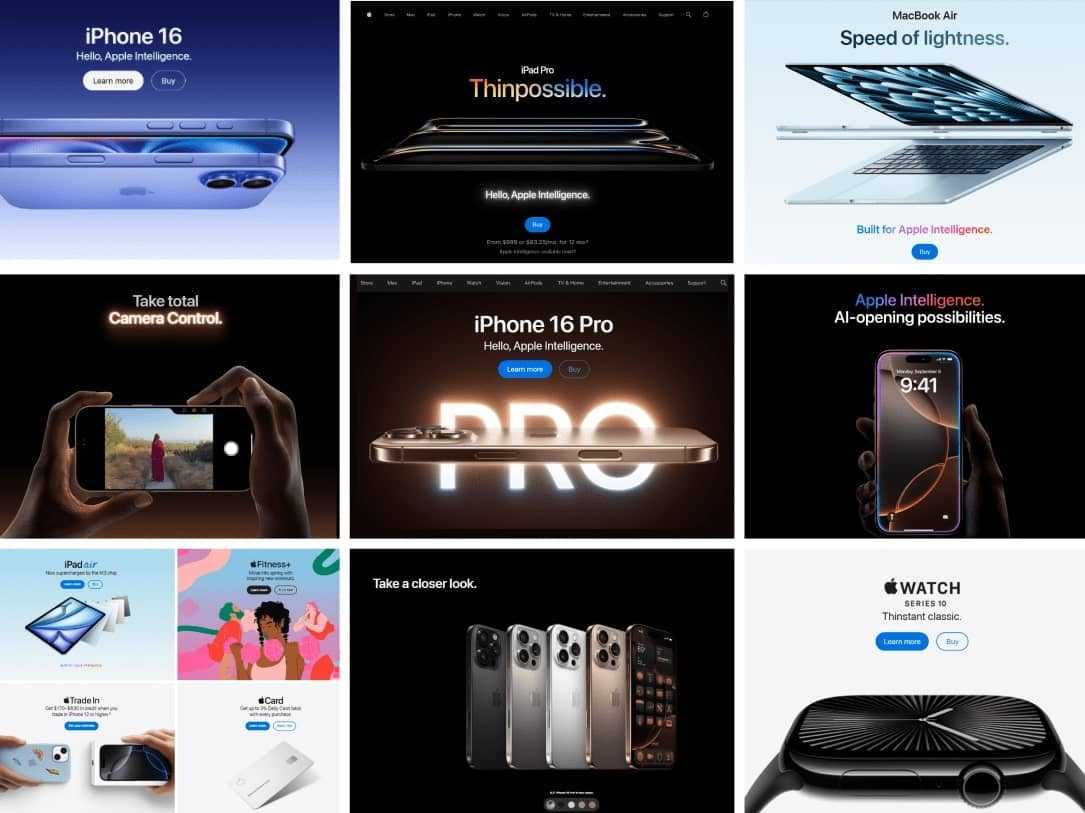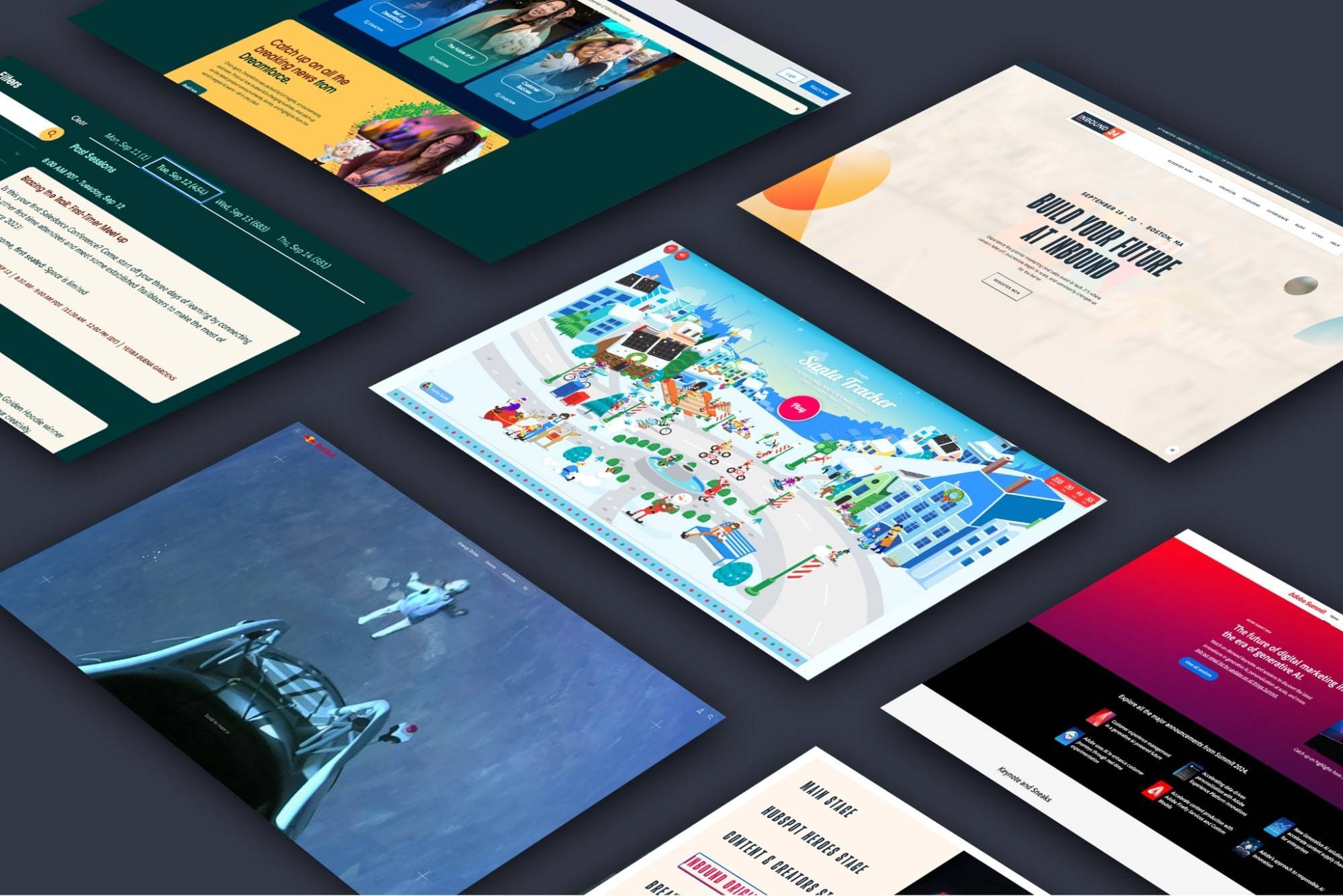

B2B Lead Generation Strategies & Best Practices
It’s no secret that businesses need a steady pipeline of new sales leads to survive and grow. B2B (business-to-business) companies in particular need customized marketing strategies that reach the right audiences at various points of their customer journey and nurture them into becoming qualified leads.
The secret to generating B2B leads through effective digital marketing lies in engaging business customers and prospects with useful, relevant content that captures their attention, increases your brand reach and awareness, and ultimately grows your revenue.
When executed properly, the best digital lead generation strategies for B2B companies position brands as industry experts that other businesses can rely upon, while also making it easy for prospects to find and engage with content that nurtures them to conversion across a mix of digital marketing channels.
So how do you start planning a B2B lead gen strategy? How do you know what content to create for inbound marketing, or how to find and learn more about your prospects’ digital habits? We'll provide answers to these questions and more as we explore some strategies and best practices for generating B2B leads.
How to Generate B2B Leads Digitally
First, Categorize Your B2B Sales Leads
A steady inbound flow of sales leads is critical in maintaining a continued and stable sales pipeline that can be used to forecast growth and revenue for the business. However, not all sales leads are equivalent in their value or importance to your business.
Your best leads may be companies or prospects that are potentially your brand new customers, or they might be members of your pre-existing customer base that want to increase the products or services they buy. Both have potential value, of course, but different companies will prioritize them differently when forming their marketing strategy.
Broadly speaking, leads are categorized into three buckets based on a combination of their intent, their readiness to buy, and their qualification as potential customers:
- “Hot” Leads - The prospect is ready to buy, perhaps even in urgent need, and has the money and budget to close the deal. Current customers interested in adding to their existing contract or engagement are often more likely to convert, and easier to sell.
- “Warm” Leads - An interested organization or person may want to buy, may have already done a trial, or may be already locked into a contract with a competitor–regardless, it’s clear they are seeking new solutions. It’s also reasonable to assume they are qualified, based on their interest and engagement with other service providers.
- “Cold” Leads - The prospective customer does not have any knowledge of your brand or what your company does–or they could be in the discovery phase, and only looking for information.
Categorizing leads is useful because your strategic approach to converting them should vary based on their distinct needs and viability at each stage.
Putting your leads into these buckets also gives you a better understanding of your sales pipeline, conversion rates, and the number of new leads your inbound marketing must feed into each category in order to support your sales team and maintain business growth.
Digital Strategies for B2B Lead Generation
There are a number of inbound and outbound strategies that digital marketers can use to generate leads for B2B organizations.
1. Drive Organic Traffic through Search Engine Optimization (SEO)
When combined with web design and content marketing, optimizing a B2B website for organic search significantly improves lead generation by feeding more qualified prospects into the website marketing funnel.
Identifying Keywords that Match Prospect Search Intent
Keyword optimization for SEO starts with identifying user intent, or the real meaning behind the keywords your prospects type in a search engine text box.
When it comes to online search, there are two primary types of user intent:
- Knowledge/Research – Someone is looking to learn more about a topic or explore related pieces of information.
- Purchase or Contact – There is an intent to purchase, for example when someone is shopping for something described by the keyword.
Google and other search engine algorithms attempt to identify the intent of each search based on a number of contextual factors, including:
- the keywords used in the query
- the searcher’s previous search history
- the searcher’s current and past locations
- other relevant and measurable data gathered from the searcher's device
For search engines, correctly determining the intent of a search query helps ensure that matching search results have high relevance and quality. For marketers, predicting search intent for the keywords they target helps for crafting content that properly and effectively answers the specific query.
Determining the search intent of your prospective customers also helps you compose Page Titles and Meta Descriptions that improve clickthrough rates, conversion rates, and brand awareness for each piece of content when they appear in search results.
Keyword Optimization vs. Technical SEO
Keywords and content have long been known to help improve SEO and achieve high search rankings, but now the technical aspects of a website are gaining equal importance for a website's search performance. Google’s latest core algorithm update, known as the Page Experience update, prioritizes best practices in page speed, accessibility, security, core web vitals and more.
Going deeper into technical search optimization, the addition of structured data such as schema markup adds even more contextual information that search engines can use to properly link the content with relevant topics and prominently display elements of the content in Google search features known as Rich Results or Featured Snippets. This could mean the difference between publishing a blog that doesn’t rank versus publishing one that gets featured at the top of search rankings.
Strategies and Tools to Support SEO for Lead Generation
1. Gain trusted backlinks (known as "link building").
To increase SEO rank, work to build good backlinks by guest blogging or other means. Please note that not all links have equal value–as a rule of thumb, try to get links from websites that have higher domain authority than your website. For example, a link from a publisher such as Forbes will have a great impact on your ranking, compared to a link from a newly-built website. Keep in mind that getting links from any popular and established website is much more difficult, and takes more time.
2. Answer relevant questions using FAQs.
Provide the best answers to the question your audience is asking. Incorporating keywords into on-page copy, optimizing title tags and meta descriptions, adding structured data – all of these practices contribute to the SEO value of your FAQ page for Google.
3. Create SME Blogs for knowledge and authority.
One of the most effective ways to build brand awareness, while providing relevant and useful content to your target audience is through consistent blogging. Subject matter expertise is a reflection of your industry knowledge and authority to attract traffic to your website.
4. Optimize your website's landing pages.
You should also understand which keywords are important and target them with content. On-page optimization is also an important factor for lead generation because it helps search engines to better understand your content and figure out if it applies to the query of a searcher. Tweaking what is visible to users on your webpages (images, video, or audio) and elements that search engines can view (heading tags, structured data) will give you more control as opposed to off-page optimization which mainly concentrates on backlinks.
2. Use PPC Advertising for More Targeted Campaigns
PPC (Pay Per Click) advertising allows businesses to showcase their products and services when users submit keyword-relevant queries into search engines like Google and Bing. These ads are displayed at the top of a search engine results page (SERP), and only cost the business money when a user clicks on their ad.
The amount a company decides to bid on clicks from a keyword search directly impacts where their ad will be located within a SERP, which is partially determined by an auction. This bidding process is known as Ad Auction, and it’s part of an algorithm that search engines use to determine the order and location of ads displayed in search results.
Some Advantages of PPC for Lead Generation
- Demographic Targeting - If you know the demographics of your target audience(s), PPC platforms like Google Ads allow you to cater the contents of your ads specifically to those individuals and only show in certain areas at certain times of the day.
- Budget Control - Since PPC ads literally mean that you only pay-per-click, you’re essentially only paying for guaranteed website traffic. Still, keywords with a higher search volume are more competitive, which ultimately means they will be more expensive because more B2B businesses are competing with you to claim space on the SERP that’s relevant to the high volume keyword.
- Gaining Traction - New product launches often benefit from PPC campaigns that can build rapid brand awareness by showing up in related keyword searches.
- Display Advertising - In addition, if you know the specific sites your audience spends time on, you can target those as well by bidding on specific sites in the display network.
- Remarketing Opportunities - Yet another strategy is remarketing, which is a way to connect with people who previously interacted with your website or mobile app. It allows you to strategically position your ads in front of these audiences as they browse Google or its partner websites, thus helping you increase your brand awareness or remind those audiences to make a purchase.
3. Don’t Ignore Social Media Marketing
If you want to be a successful B2B business in today’s competitive marketplace, social media needs to be a component of your B2B lead gen strategy. It’s the digital age after all, and it’s time that all companies realize that their next customers are on social media. That’s why it’s so important to integrate social media marketing campaigns into your B2B marketing plans.
The first step, if you haven’t already taken it, is to set up accounts for your business on the major platforms where your audience lives. Typically, the most relevant platforms B2B companies should care about are LinkedIn, Facebook, Instagram, and Twitter.
Social Lead Generation Tips
- Get More Social Shares - Content management on social media should be competitive enough to gain attention and maximum social shares.It is imperative to publish content regularly and keep the social media active at all times. Getting more social shares is a way to grow your network. As they grow your following, they can increase the leads you generate by social content.
- Share Content From Your Website - Sharing content from your website is a great way to post more on social media and it’s also an effective way to drive more traffic to your website. Your website and social media channels should work together in this way. If you’re regularly posting blogs and news articles on your website be sure that you’re also sharing them on social media.
- Consider Paid Social Campaigns - Today’s B2B buyers are not one single person–rather, they’re made up of diverse teams composed of multiple stakeholders within an organization who use multiple platforms and sources to discover information about new vendors. When more than 50% of B2B marketers use social media platforms to research vendors, you can be sure it is an effective channel for generating leads.
4. Get More ROI with Email Marketing
Along with being one of the older online channels for B2B marketing, email is also one of the most trusted sources of information for B2B buyers. However since B2B customers are, like many of us, bombarded with information and content through a daily barrage of emails, nailing down a solid strategy for your email marketing can prove challenging.
List Segmentation is Key
Segment your email list(s) in a way that allows different segments to receive individualized, targeted messaging that resonates with the specific personas in that segment, rather than a generic automated email.
A great way of categorizing email contacts for segmentation is by job title; you wouldn’t use the same vocabulary or tone for a Marketing Director as you would for a Sales Manager, so split your data by department or seniority so you can send each segment the appropriate copy.
You can also segment lists by industry, if you have broad buyer personas. This enables you to construct highly-targeted campaigns, with a message that’s far more specific to the pain points of the person receiving it, making it more likely they will respond.
Get Creative with Cold Emails
Cold outreach emails are sent to people you don’t know well or at all, and are a great way to draw prospects into your sales funnel–but only if you don’t sound “spammy,” and that can be easier said than done for many email writers. Here are some tips to keep in mind when forming your email strategy and writing cold email campaigns:
- Avoid email templates - Using generic or automated templates risks alienating recipients and damaging your reputation. If you waste people’s time by filling their inbox with junk, they’ll develop a negative image of your brand.
- Identify the prospect's pain points - Cold outreach messages that are vague or self-promoting rarely work. Instead, get creative with the content of your cold emails. Send concise messages that focus on a pain point faced by your target audience, leading them into your solution. It doesn’t matter whether the recipient is an entry level worker, manager, or business owner–everyone at a business is looking to solve problems, and they can be intrigued by a well-crafted message promising relief.
- Keep the reader engaged - Don’t waste time getting to the “meat” of your message either–end your introductory sentence by hinting at a benefit your audience cares about. This gives them an incentive to continue reading your email. Include a reference to their goals, demonstrating that you’ve taken time out to understand their business.
- Entice your recipients to respond - Finally, give readers a reason to reply. End the emails with compelling reasons why the reader should get in touch with you immediately. Think of it as a call-to-action.
5. Grow Brand Awareness with Content Marketing
Content is always king and most B2B brands agree that content marketing is highly effective at increasing lead generation. Now, with recent changes to Google’s search algorithm, content remains supreme.
The key to successful content is defining your target audience and creating something that makes their lives easier in some way, and there are several examples and methods for achieving this:
Interview decision-makers, influencers and industry leaders.
Decision-makers are a target audience for B2B marketers, so interviewing them helps that audience see themselves in your content, making it more likely they will take an interest, read the content, and convert.
Influencers and thought leaders in the industry contribute valuable knowledge and insights that draw from their experience and expertise, lending more credibility to your content marketing efforts.
Publish white papers and case studies that prove your results.
Content pieces like case studies and white papers can help B2B companies showcase other brands that have successfully benefited from using your solution.
To create effective B2B case studies, focus on how your solutions address specific customer pain points and use a data-driven approach. Case studies serve as powerful social proof, which is important at a time where a larger percentage of buyers begin the sales process with a referral.
Use downloadable content to increase sales leads.
For B2B businesses, lead generation is the pathway to success. You need to be able to identify potential customers in order to get your story in front of the right people. eBooks are a great way to do both at the same time.
From a marketing perspective, the eBook fits into a broader category known as a Premium Content Offer. This is anything that sits behind a gate, a form that requires contact information. The eBook provides an excellent, long-lived and long-form method to tell ‘your story’.
A well-written eBook leaves potential customers perceiving you as helpful and knowledgeable. It generates leads while building your brand. The primary goal of your eBook has been achieved before it has been read — gathering the contact information and adding it to your potential client database.
6. Use PR Strategically to Increase Reach
The world of public relations is not just about spraying your news and announcements all over the place and crossing your fingers in the hopes that people see your brand. Effective PR requires a much more strategic approach that starts with defining your goals and identifying the publications and publishing partners that align with your audience of prospective customers, as well as your brand.
Issuing Press Releases
Multimedia press releases use links, videos and images to tell the story, and they attract attention. They get more attention than the traditional news release. They allow audiences to engage with your organization and spread your message in the way they prefer.
With the right SEO and CTAs, press releases can add significant value that supports your lead generation goals. A news organization may run your press release verbatim. A blogger somewhere else may grab an image. A prospect doing a Google search may stumble on your release and send an attached video to decision-makers at their company.
Cultivating Relationships with Publishers
Building relationships with editors, writers and influencers can go a long way in lead generation. They might cross-publish or link to your published articles, funneling traffic from their site to yours that is interested in your content and thus more likely to convert. Not to mention these external links build SEO power for your site that can elevate it in search engine rankings, further improving your lead generation.
7. Online Reputation Management
Make your brand more trusted through content. Capitalize on the benefits of client testimonials and case studies. The reputation management strategy for your business should run through digital marketing, with careful attention to the way your brand engages with external audiences that post content about you or your solutions.
Getting More Online Reviews
If you want to generate online reviews, it goes without saying that there needs to be a place for customers to post them. For example, if you want to garner a lot of positive reviews on “Yelp” (one of the most popular review sites), you need to make sure that you’ve set up a profile. This is especially important for a review site, because ‘claiming’ your business will allow for online reviews to be shown in search engines. Another way is sending your customer a sequence of emails after they have bought something from you. As a rule, just make sure you input an email into the sequence that asks people to leave an online review.
Foster Customer Recommendations and Referrals
Referral marketing is a marketing tactic that makes use of recommendations and word of mouth to grow a business's customer base through the networks of its existing customers. Referral marketing can take many forms. It's a way to get your most satisfied customers to help spread positive words about your brand. The most qualifying leads are generated through customer recommendations and referrals
We Get Leads for B2B Companies
Are you struggling to generate new sales leads for your B2B company? Need expert help with any of the lead gen strategies included here? At DBS, we’re a full-service digital agency that’s been helping B2B businesses grow through robust content marketing, SEO, and web design for over 20 years.
We can help you too. Contact us for more information about our lead generation strategies that drive growth for businesses and give them a winning edge on the competition.
FAQs
Best practices for B2B lead generation are:
Drive organic Search Traffic Through SEO
Use PPC Advertising for More Targeted Campaigns
Don't Ignore Social Media Marketing
get More ROI with Email Marketing
Grow Brand Awareness with Content Marketing
Use PR Strategically to Increase Reach
Online Reputation Management
You should categorize your leads as:
"Hot" Leads: The prospect is ready to buy
"Warm" Leads: An interested person
"Cold" Leads: Has no knowledge of your company
There are several methods and strategies B2B (business-to-business) marketers can use to generate sales leads. The most cost-effective strategy for B2B lead generation combines content marketing and search engine optimization (SEO) that continually increases the number of prospects visiting the company website who eventually become new leads.




